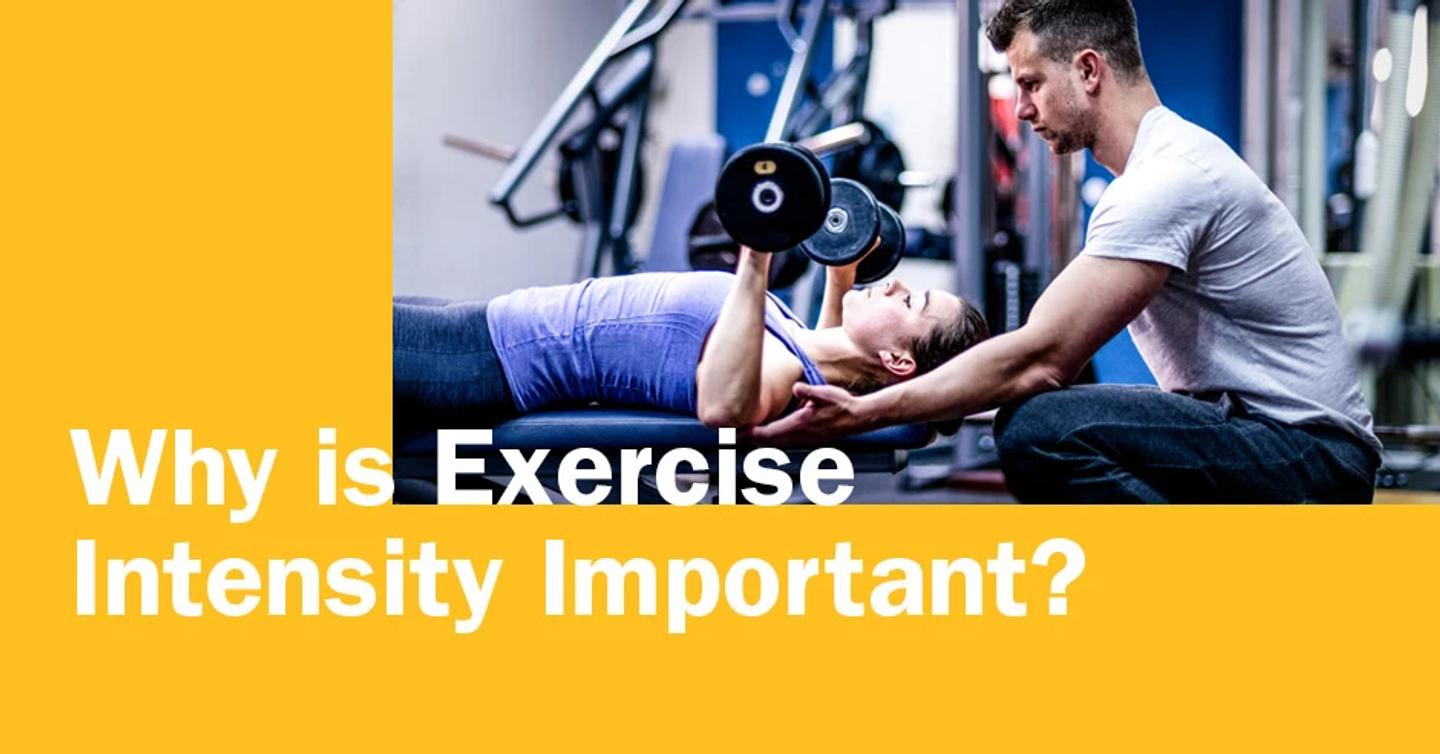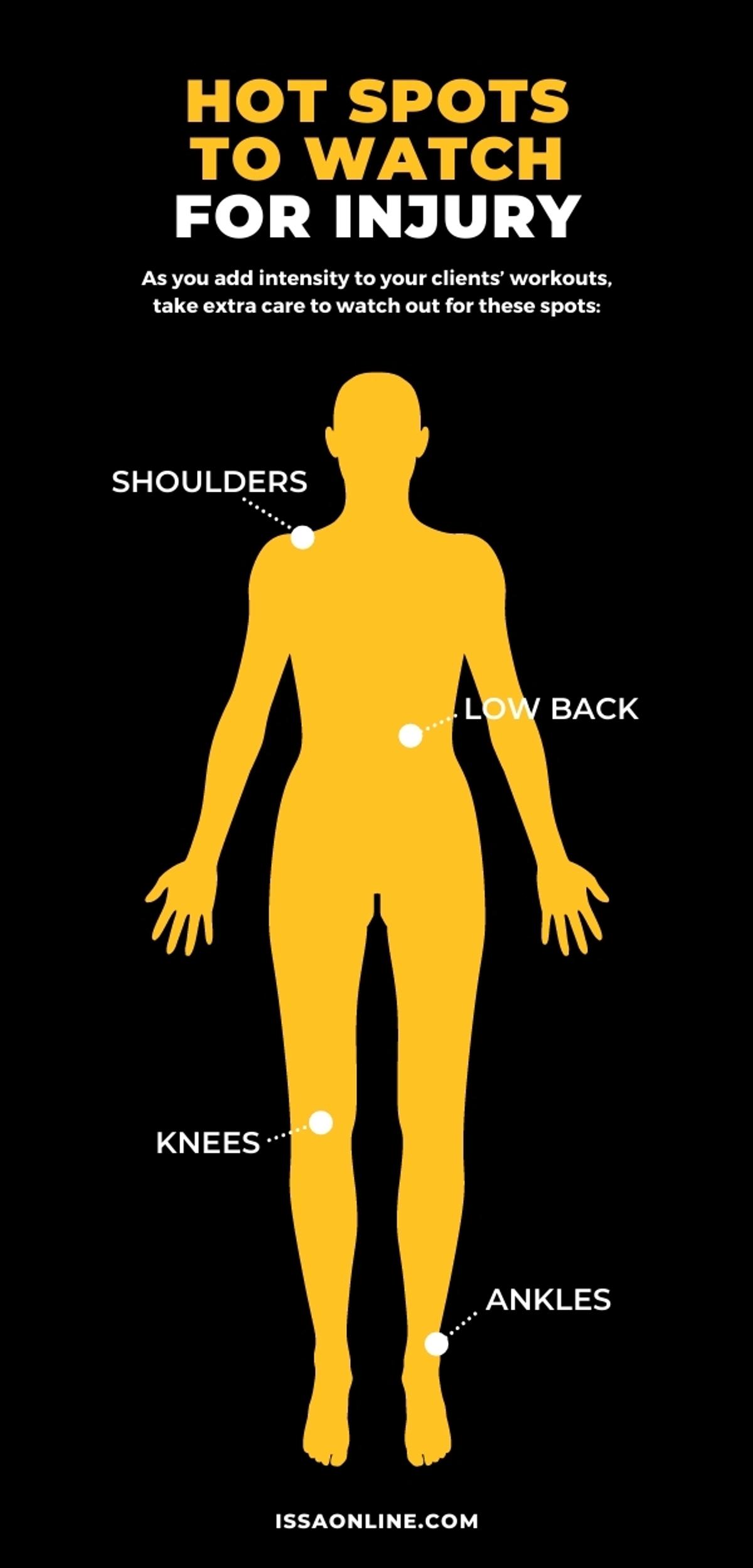
Why is Exercise Intensity Important?
Reading Time: 5 minutes 10 seconds
BY: ISSA
DATE: 2021-05-12
When developing a program for a client, there are many factors that you have to take into consideration. You look at the health-related factors of the clients, like age and cardiovascular health, their background in exercise, their fitness assessment, and others.
All this information comes to bear in what you deliver to the client, but there's a piece of the program that colors everything you do—exercise intensity.
The intensity of your workouts can make the difference between significant and lackluster progress. It also can make the difference in the probability that your client could get injured. Beware the saying, "the greater the risk, the greater the reward." Whereas more intensity can deliver incredible results, if you make an exercise prescription too intense, at any fitness level, you can break your clients. This is completely unnecessary, as there are safe ways to increase intensity as a client develops.
As such, hedging your risk is the name of the game. In this case, that simply means to apply intensity appropriately. But how do you determine this? And how does something like intensity have such a drastic impact on outcomes?
The Meaning of Intensity Level
At the end of the day, intensity boils down to the level of energy exertion in a given timeframe or exercise.
In terms of cardiovascular fitness, intensity refers to heart rate. However, there's the physicality aspect of intensity on a cardio workout as well. Intensity is sometimes best described in comparison to something else. For instance, in aerobic fitness, let's compare running to walking.
Running uses more energy, getting a higher heart rate out of the one exercising, and as such is more intense. But it doesn't stop there. Running also places a higher load on your joints and muscles, which is its own form of intensity.
Walking, on the other hand, does not get one's heart rate up as high and puts less strain on the body.
Both are important and both have their use. One isn't objectively better or worse than the other. The question, rather, is which one is best for your client?
In terms of resistance training, intensity can be measured in weight, volume of repetitions, and speed of the movement or explosiveness. Think of these as the classifications of tools you have at your disposal. Sometimes, a slow, focused set of repetitions can be intense, just like a set of power cleans can be intense, just in different ways.
Again, the question is not which is best, but which is best for your client.
Gauging Intensity Levels For Your Exercise Program
There are several ways you can appropriately "dial in" your clients to the right level of intensity. This is extremely important, as during the first few weeks you should assume nothing. Take what they tell you, but keep in mind that often people overstate their experience in exercise. Or, the experience they have could be garbage.
This is why your fitness assessment is so important—but in reality, your fitness assessment should be ongoing. So, start with lower intensity to be safe and build on that once you have seen that the client can handle it.
Here are some ways to determine intensity levels and if they should change in your client's programming.
Perceived Exertion
This is the old-school way. Effectively, an increase in intensity will, even in a cardio workout, push you closer to your anaerobic threshold, consuming more oxygen. VO2, as known to fitness professionals, is your oxygen consumption. VO2 max is the maximum level of oxygenation of the bloodstream. The higher your client's VO2 max, the better their body uses oxygen in the bloodstream.
Long story short, the more out of breath your client is following an exercise, the more they have exerted themselves. Can they maintain a conversation? Are they out of breath? These factors can tell you a lot about their perceived exertion levels.
Using Target Heart Rate Zone
This one requires you to either have a heart rate monitor or know how to take a pulse. When you have accurately calculated your client's resting heart rate, you can use various formulae to calculate their target heart rate for various activities.
If you know that a client's heart rate during physical activity is below their target heart rate, then you know that they probably need more vigorous exercise. But, you have to get new heart rate assessments every so often as their aerobic capacity will increase with consistent exercise. This will likely lead to a lower resting heart rate, and thus a need to recalculate what their workout intensity should be as their VO2 max improves.
Why Intensity Matters
When it comes to intensity, it's important to have a bird's eye view of your client's progress as well as a day-to-day view. Think of it like recovery—another essential factor in determining intensity. In your workouts, rest is usually a component in between sets (except for the highest intensity training which has no resting yet can be very dangerous if done improperly). This makes sense. In order to get 100% out of your next set, you need to let the muscles recover from the trauma of the previous set.
This is true, also, of workouts overall. Not only do your muscles need to recover in between sets, but they also need to recover in between workouts.
Similarly, there is the intensity of your individual repetitions, and then there's the intensity of your program overall.
There is never a reason to be unsafe, especially when it comes to intensity. There is always a way that you can be safe while increasing intensity. But, one of the components of safety is the competence level of your client. This is not meant as a slight to anyone, simply to say that competence in fitness is something that an individual must work toward, and until there, should be treated carefully.
How Intensity Affects The Body
As you increase intensity, you are increasing the amount of exertion required to perform a given exercise. You will use more of your muscles and this will tax your cardiovascular system even more.
Added intensity in a workout, be it aerobic training or anaerobic exercise, increases energy expenditure (burns more calories), improves insulin sensitivity, increases lactate threshold, and much more. Weight loss can be more efficient and effective, and athletic performance will increase.
These are all the benefits of increasing intensity within your workouts. However, as stated before, these benefits all come with increased risk. As intensity increases, so does the risk of injury.
Progression
When you start with a client, you need to assess them based on a low-intensity program. Even if they have "experience," start with something small and light. You never know for sure about someone's ability level until you are putting eyes on them in their workouts.
One of the best ways to assess progression for intensity is heart rate. Heart rate will tell you immediately how intense the workout is. With this information, you can know in real time how your client is performing. If it's taking too much time for them to get into their target heart rate zone, then they likely need more intensity. On the flip side, if your client is getting into their target zone (or higher) too quickly, you should probably dial the intensity back.
If you would like to learn more about intensity and how to train at higher levels, dig into ISSA's Strength and Conditioning certification. You'll be able to pursue your passion for fitness and learn how to train high-performing clients and produce results-driven programs. Get started today!

Download this FREE infographic here!
Featured Course
ISSA | Strength and Conditioning Coach
ISSA's Strength and Conditioning course bridges the gap between science and application by giving students the "how" of helping athletes achieve any sport-related goal. With this course, not only will you learn the exercise science behind strength and conditioning, but exactly how to create the perfect training program for any athlete. Further, it offers one of the only accredited exams in the strength and conditioning space, making you a hot commodity to any employer.